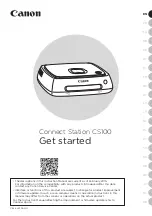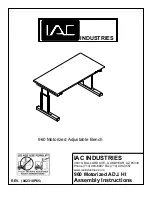
T
T
T
S
S
S
3
3
3
2
2
2
M
M
M
~
~
~
1
1
1
G
G
G
C
C
C
F
F
F
8
8
8
0
0
0
80X CompactFlash Card
Transcend Information Inc.
V1.1
39
Some hosts, such as the X86 processors, must increment both the source and destination addresses when executing the memory
to memory block move instruction. Some PCMCIA socket adapters also have auto incrementing address logic embedded within
them. This address window allows these hosts and adapters to function efficiently.
Note that this entire window accesses the Data Register FIFO and does not allow random access to the data buffer within the
CompactFlash Storage Card.
A word access to address at offset 8 shall provide even data on the low-order byte of the data bus, along with odd data at offset 9 on
the high-order byte of the data bus.
5.4 True IDE Mode Addressing
When the CompactFlash Storage Card is configured in the True IDE Mode, the I/O decoding is as follows:
Note: 1) See the section 6.1.5 CF-ATA Registers for information regarding the control of 8 or 16 bit transfers to the data register.
5.5 CF-ATA Registers
The following section describes the hardware registers used by the host software to issue commands to the
CompactFlash device. These registers are often collectively referred to as the “task file.”
Note: In accordance with the PCMCIA specification: each of the registers below that is located at an odd offset address
may be accessed in the PC Card Memory or PC Card I/O modes at its normal address and also the corresponding even
address (normal address -1) using data bus lines (D15-D8) when -CE1 is high and -CE2 is low unless -IOIS16 is high (not
asserted by the card) and an I/O cycle is being performed.
In the True IDE mode of operation, the size of the transfer is based solely on the register being addressed. All registers
are 8 bit only except for the Data Register, which is normally 16 bits, but can be programmed to use 8 bit transfers for
Non-DMA operations through the use of the Set Features command. The data register is also 8 bits during a portion of the
Read Long and Write Long commands, which exist solely for historical reasons and should not be used.
5.5.1 Data Register (Address - 1F0h[170h];Offset 0,8,9)
The Data Register is a 16 bit register, and it is used to transfer data blocks between the CompactFlash Storage
Card data buffer and the Host. This register overlaps the Error Register Table: Data Register Access below describes the
combinations of data register access and is provided to assist in understanding the overlapped Data Register and
Error/Feature Register rather than to attempt to define general PCMCIA word and byte access modes and operations.
See the PCMCIA PC Card Standard, for further definitions of the Card Accessing Modes for I/O and Memory cycles.
















































